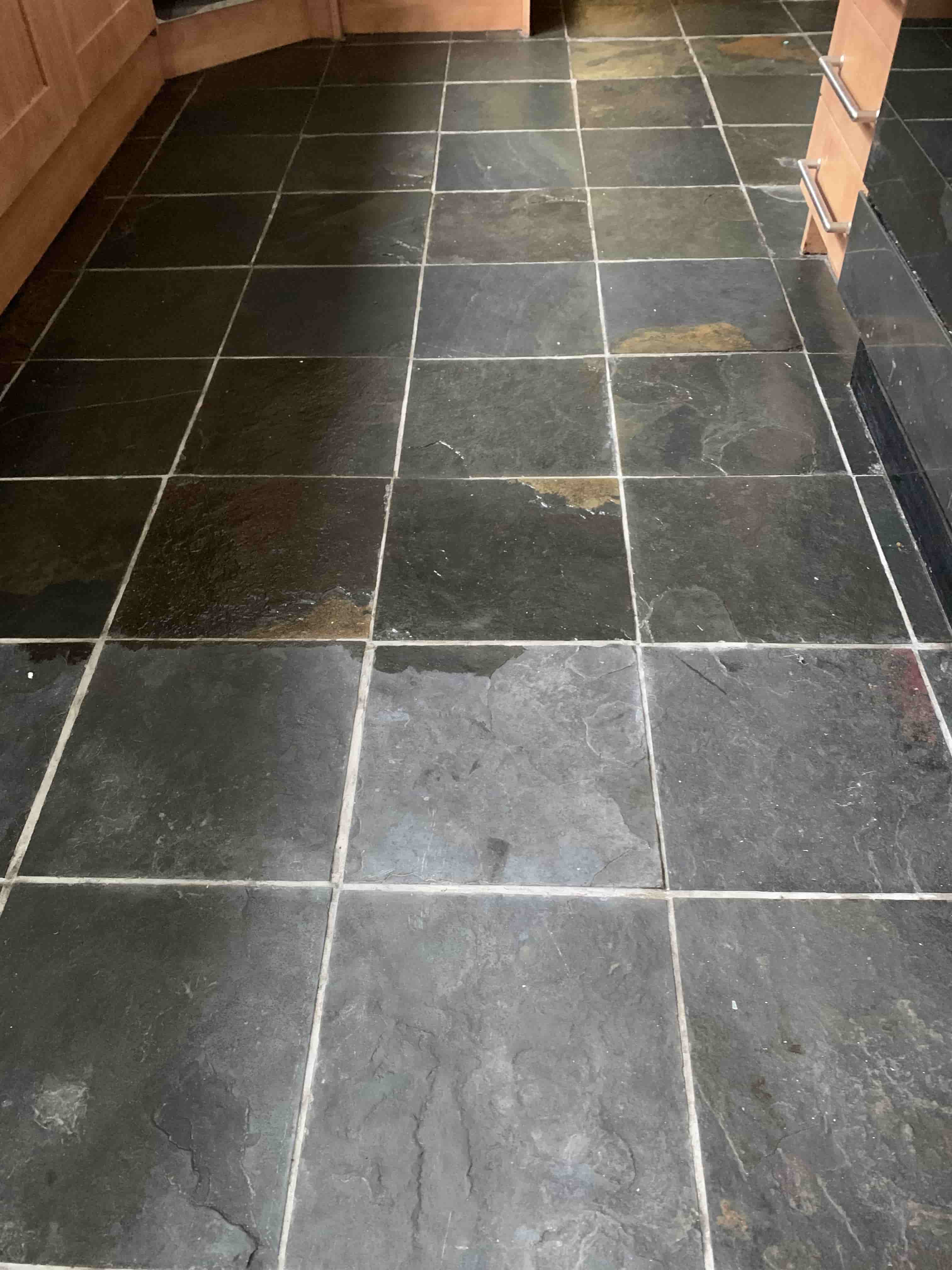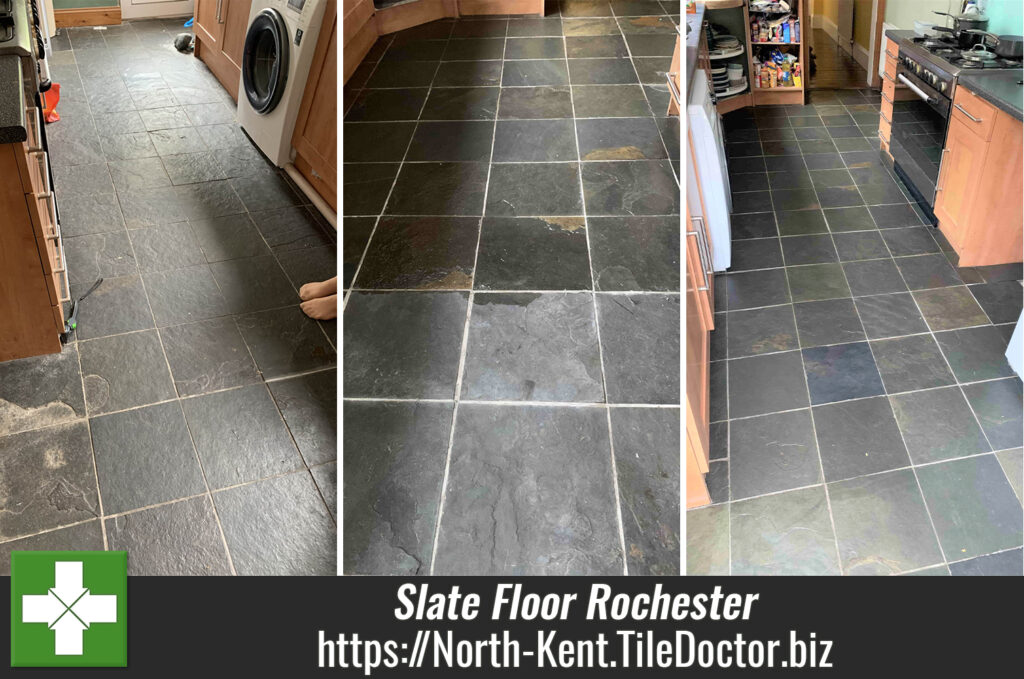The photographs below are of Slate tiled Kitchen floor at a property in the historic Kent city of Rochester. It had been a while since the stone had been given a deep clean and seal, so the floor was looking tired and in need of rejuvenating. The occupants were unhappy with its appearance and wanted the life putting back into what was once an attractive floor to be proud of.

You can see from the photo above that the Slate tiles were looking dull and washed out, some areas had water staining and in places the grout was heavily stained. Kitchen floors do experience the most wear and of course being in a kitchen they can suffer from accidental spillages etc. Thankfully, we at Tile Doctor are perfectly equipped to deal with these issues so I was confident we could resolve all the problems and dramatically improve its appearance.
Cleaning a Brazilian Slate Tiled Floor
My first course of action was to focus on cleaning the Slate and Grout, the latter of which needed some serious attention. For this a created a strong solution of our reliable high-alkaline tile and grout cleaning product, Tile Doctor Pro-Clean. The solution was applied to the floor, left for ten minutes so it could get to work and then and agitated into the tile and grout using specialised grout brushes and a professional floor buffer fitted with a 17”, circular, nylon brush. This not only cleaned the tiles but also removed any old sealant remaining on the floor. The pads do struggle to reach into the recesses of the grout lines, so I followed up scrubbing the grout by hand using a wire brush and more Pro-Clean.
The floor was rinsed with water and the resulting slurry was quickly extracted using a wet vacuum. The floor was then given an acid wash using a weak dilution of Tile Doctor Grout Clean-Up. This product is made from concentrated phosphoric acid and is great for removing grout smears and salts from the tile and grout ensuring there’s nothing that can detract from the natural appearance of the stone. Giving the floor an acid rinse also ensures a better bond with the sealer.
The floor was given a final rinse and mop with plain water to neutralise the tile and grout after remove any trace of cleaning product. This was followed up with the wet vacuum ensuring the floor was as dry as it could be by the end of the first day.

Sealing a Slate Tiled Kitchen Floor
I then left the floor to dry off overnight and returned the next day to apply a fresh sealer that will protect the stone from ingrained dirt and improve its appearance. The floor has to be dry before applying the sealer, so I checked first with a moisture meter on various parts of the floor to be sure.
Happy the floor was dry I started with the application of Tile Doctor X-Tra Seal which is a very modern product oil-based resin formula that provides strong water and stain repellency, ideal for a kitchen. X-Tra Seal has a low sheen finish and contains a colour enhancer that puts the black back into the tiles.

Once complete the Grout was clean and the Slate was given a new lease of life with its original vigour restored. And of course, the occupants now had a Kitchen floor they could be proud of!


Never use a strong tile cleaning product or steam cleaner for the regular cleaning of sealed stone as this can reduce the life of the sealer. We recommend using a specialist product such as Tile Doctor Neutral Tile Cleaner or Stone Soap for the regular cleaning of sealed tiled surfaces. If you do use another product always read the label first, most supermarket tile cleaners are only suitable for use on Ceramic or Vinyl tiles.